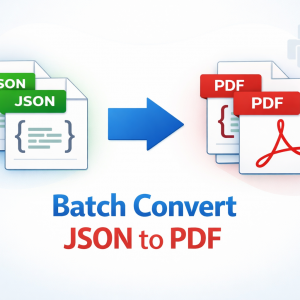Creating SEO content that actually ranks is no longer about stuffing keywords into a page and hoping Google notices. Today, ranking requires a combination of search intent alignment, topical authority, content depth, on-page optimization, and user experience signals. At Digital Marketing Agence, we use a strategic and data-backed approach to content creation that helps brands outrank competitors not because they publish more, but because they publish better.
This process has become especially important for brands investing in high-competition markets such as those using SEO services in Dubai, where ranking requires not just content, but content that is structured, researched, and optimized around what Google rewards in 2025 and beyond.
This guide breaks down how to create SEO content that ranks, step-by-step, without shortcuts or outdated tactics.
Why Most Content Doesn’t Rank
Millions of blog posts are published every day, yet only a small percentage ever reach page one. The most common reasons content fails include:
-
Targeting keywords without search intent validation
-
Writing without competitor and SERP analysis
-
Creating content that is too shallow or too broad
-
Not matching content format to ranking pages
-
Ignoring internal linking, EEAT signals, and schema
-
Publishing content without continuous optimization
Ranking is not random, it is the result of a repeatable framework.
Step 1: Start With Search Intent, Not Keywords
Content ranks when it matches what the user expects to find, not simply when it contains the right keywords.
Before writing, determine:
| Intent Type | User Purpose | Best Content Format |
|---|---|---|
| Informational | Learn something | Guides, tutorials, how-tos |
| Commercial | Compare options | List posts, reviews, vs posts |
| Transactional | Take action | Landing pages, product/service pages |
| Navigational | Reach specific site | Brand pages, login pages |
A blog post will never outrank a product page for a transactional keyword no matter how good the content is.
Step 2: Analyze the Current SERP Before Writing
Search the target keyword and study:
-
What types of pages are ranking? (blogs, landing pages, videos, ecommerce, etc.)
-
What content structure do they use? (headings, FAQs, lists, data, visuals)
-
What depth does Google expect? (500 words? 2,500+ words?)
-
Are there featured snippets, videos, People Also Ask boxes?
This prevents creating content that is incorrect for the ranking landscape.

Step 3: Build Content Around Topical Depth, Not Keyword Density
Modern SEO requires topic completeness, not just keyword usage. Google’s NLP (Natural Language Processing) systems check whether your content covers every important subtopic.
Example: If the keyword is “technical SEO audit,” Google expects supporting coverage like:
-
Crawling & indexing checks
-
Core Web Vitals review
-
XML sitemap & robots.txt analysis
-
Duplicate content audit
-
Structured data validation
-
Internal linking review
If you miss key subtopics, search engines assume the content lacks authority.
Step 4: Create an SEO-Optimized Content Outline Before Writing
A ranking-ready outline includes:
H2/H3 structure aligned with user journey
Questions sourced from “People Also Ask”
Semantic keyword variations (not repetition)
Internal link opportunities to related articles or service pages
Content sections designed to win featured snippets
A strategic outline reduces rewrites and increases ranking probability before the first word is written.
Step 5: Write for Humans First, Optimize for Google Second
Content must:
-
Answer the query fully
-
Demonstrate expertise and real experience
-
Include credible examples, data, and references
-
Offer original insight, not AI-generic wording
Google’s EEAT systems (Experience, Expertise, Authoritativeness, Trustworthiness) reward content that shows proof of knowledge, not just word count.
Step 6: Optimize On-Page SEO Properly
A ranking page includes:
| Element | Best Practice |
|---|---|
| Title Tag | Uses primary keyword + value + click angle |
| Meta Description | Compelling summary under 160 characters |
| H1 | Clear, descriptive, includes keyword |
| H2/H3 | Semantic, scannable, based on intent sections |
| URL | Short, descriptive, keyword-based |
| Images | Compressed, alt text optimized |
| Internal Links | Point to pillar & related pages |
| External Links | Cite trusted sources |
On-page SEO is not about “tricks”, it’s about clarity and structure.
Step 7: Add Elements That Increase Rankings and Engagement
Google measures user satisfaction through behavior signals such as dwell time, scroll depth, and pogo-sticking. To increase retention, include:
-
Data tables and statistics
-
Custom visuals (charts, frameworks, diagrams)
-
Step-by-step sections
-
Real-world use cases or examples
-
FAQ section targeting long-tail keywords
Engaged users = stronger rankings.
Step 8: Support the Content With Internal Links and Topical Clusters
One blog post cannot fully prove authority. Google ranks websites, not just pages.
Create topical clusters, for example:
Pillar Page: SEO Content Strategy
Cluster Articles:
-
How to do keyword research
-
Search intent guide
-
Long-form content vs short-form
-
Content optimization mistakes
-
How to increase dwell time
Internal links pass relevance, authority, and crawl priority.

Step 9: Publish Then Optimize Continuously
Ranking rarely happens instantly. After publishing, monitor:
-
Click-through rate (CTR)
-
Keyword position movement
-
Time on page
-
Bounce rate
-
New keyword opportunities
Content that is refreshed regularly performs better than content that is abandoned after launch.
Conclusion
SEO content that ranks is not created by accident, but by process. When you align keyword intent, SERP analysis, topical completeness, technical optimization, and ongoing refinement, ranking becomes predictable, not uncertain.
Whether you manage content in-house or work with professionals like Digital Marketing Agence, the goal is not just to publish more content but to publish the kind of content Google wants to rank and users want to read. That is the real formula behind long-term SEO success.
FAQs
1. How long should SEO content be to rank?
There is no fixed word count, length depends on topic depth and SERP expectations.
2. Can AI-written content rank on Google?
Yes, but only if edited, fact-checked, and enhanced with real expertise.
3. How fast can SEO content rank?
Anywhere from days to months depending on domain strength, competition, and optimization.
4. Should every blog post target only one keyword?
One primary keyword, but many related semantic keywords.
5. Does updating old content help rankings?
Yes, refreshed content often outranks newly published content.











